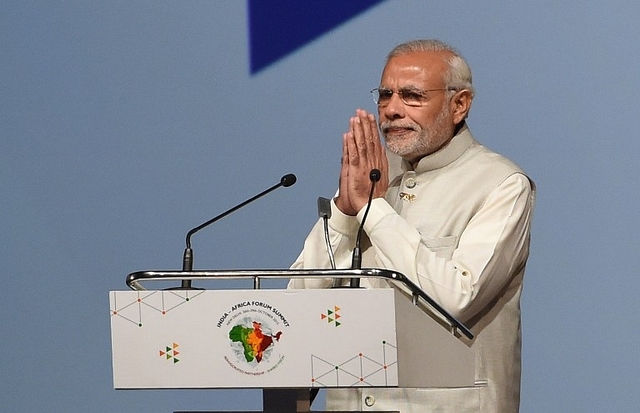
Modi's Reforms: There Will Be Pain
PM Modi’s structural reforms will cause some pain before they put India back on the growth-and-development path
Over the past six months, I have highlighted in my columns that the PM is trying to reform the Indian economy along three specific dimensions:
—Altering the subsidy regime by cutting the quantum of subsidies and moving them to the Direct Benefit Transfer platform and thus adversely impacting rural consumption
—Signaling to crony capitalists that it is not ‘business as usual’ for this subset of Indian businessmen, who use lobbying to routinely bend policy in their favour
—Attacking black money publicly through the Foreign Income and Undisclosed Assets Bill, 2015 (also called the ‘black money bill’), which punishes Indians who have undisclosed wealth abroad with a ten-year jail sentence
Why structural reforms entail short-term pain?
Structural reform usually entails short-term pain as economic agents (workers, bankers and businesspeople) struggle to cope with the altered rules of economic adjustment. As the OECD’s economists put it in 2012:
‘…it takes time for reforms to pay off, typically at least a couple of years. This is partly because their benefits materialise through firm entry and increased hiring, both of which are gradual processes, while any reform-driven layoffs are immediate.’
Britain under Margaret Thatcher, India after the 1991 reforms and Indonesia after the East Asian crisis give us a clear picture of what is likely to happen to India as Prime Minister Modi’s economic resets hit home:
—In the UK, Mrs Thatcher began the economic reform process in 1980. GDP growth initially fell to -2 per cent due to these reforms but then recovered from 1982 onwards. In particular, investment initially suffered under Thatcher as she kept monetary and fiscal policies tight. As inflation expectations were brought down, private investment gathered pace.
—In India, economic reforms began in 1991 in the wake of a balance-of-payments crisis. GDP growth fell to 1 per cent in FY92 but then recovered from FY93 onwards as with the end of the ‘license-permit-quota raj’ investment rebounded sharply.
—In Indonesia, reforms began in 1997 in the aftermath of the East Asian crisis. Economic growth fell to -13 per cent in 1998 and investment collapsed. Then on the back of large currency devaluation and more freedom for smaller businesses (as opposed to the large firms run by President Suharto and his cronies), investment gradually recovered from 2000 onwards.
These examples have a common feature: Economic growth and investment nose-dive during the initial phase of reform as the rules governing the economy are radically altered by reform and economic agents struggle to adjust to this change. Gradually, the reforms put the economy on a sustainable growth path as against the growth fuelled by excessive government spending (as was the case with Britain in the 1970s and India in the 1980s) or by unsustainable external funding (as was the case with Indonesia in 1997).
Growing evidence of economic pain in India in FY16
On the basis of my trips to various parts of India (Delhi, Lucknow, Patna, Hyderabad, Pondicherry, and rural Maharashtra) over the past three months and based on Ambit’s economic analysis, it seems reasonably clear that the PM’s resets are now beginning to bite as:
The real estate sector faces a broad-based multi-city pullback in prices (down between 5 and 20 per cent YOY in most tier 1 and tier 2 cities), transaction volumes (down by over 50 per cent cumulatively over the past three years) and new launches (down by 50-80 per cent YOY). Note that real estate capex accounts for 10-15 per cent of the Indian GDP and that over the past ten years, one in three non-agri jobs in India has come from this sector.
The rural economy faces unprecedented distress caused by lower subsidies (9 per cent budgeted drop in subsidies in FY16), low hikes in minimum support prices for three years in a row, a complete stagnation in land transactions and growing joblessness amongst rural migrants working on urban construction sites, all of which are dragging down the rural wage growth (5 per cent now vs 15 per cent a year ago). Note that rural consumption accounts for around 25 per cent of the Indian GDP.
Private sector capex is not increasing since: (a) crony capitalists see lower scope for supernormal profits under Narendra Modi and (b) less corrupt capitalists don’t see any reason to invest in a country characterised by surplus – often stranded – capacity in almost every sector.
Hence, I believe that the GDP growth in FY16 will be lower than the 7.3 per cent clocked by India in FY15. As this becomes evident over the coming months, I reckon the consensus will have to sharply scale back its expectation of 7.8 per cent GDP growth and double-digit Sensex EPS growth in FY16. If contemporary India follows the robust template for economic reform established in other economies, such a scale-back in growth expectations is more likely than not to be accompanied by a pullback in the Sensex.
This column appeared in the October 2015 Issue of Wealth Insight